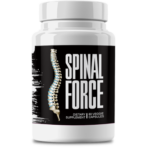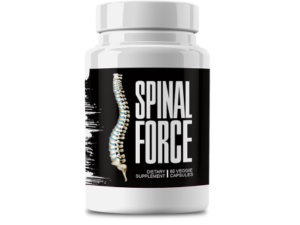This Village-Made Chinese Pain Reliever Eliminates Back And Joint Pain!
Extreme Shoulder Pain Explained: From Diagnosis to Successful Recovery

Getting to Know Extreme Shoulder Pain: The Essentials
Extreme shoulder pain isn’t just a fleeting annoyance—it’s a real hurdle that can throw your daily routine off balance. One minute you’re enjoying your morning coffee, and the next, a sudden, stabbing pain makes even reaching for your favorite book a challenge. In this post, we’re here to break it all down for you: what extreme shoulder pain really is, what might be causing it, and the many ways you can treat and recover from it. Whether you’re in pain right now or just wanting to stay ahead of trouble, we’ve got a clear, in-depth guide to help you navigate this complicated condition.
What Exactly Is Extreme Shoulder Pain?
Simply put, extreme shoulder pain means severe discomfort that usually kicks off in the shoulder joint and can even spread to the neck or arm. It’s not just about feeling sore; it can seriously disrupt your everyday life. The pain might be triggered by a sudden injury or be the result of long-term wear and tear. While some days the pain might ebb and flow, when it gets extreme, it’s often a sign that something more serious is going on. Grasping the details behind the pain is the first step to making smart choices about treatment and managing your health.
The Day-to-Day Impact of Extreme Shoulder Pain
When extreme shoulder pain hits, it’s not just your physical body that’s affected—your whole lifestyle can suffer. Routine activities, like combing your hair or picking out your outfit, can suddenly feel like climbing a mountain. The constant discomfort might even mess with your sleep, which just compounds the problem. Many people end up feeling isolated from work, social events, and even hobbies because of that stubborn, immovable pain. Recognizing just how much this pain disrupts your daily life is key; once you do, you’re more likely to seek help and start a treatment plan that really works.
Why Early Symptom Recognition Is a Gamechanger
Catching the symptoms early can make all the difference when dealing with extreme shoulder pain. If you start noticing pain that just won’t let up, or if it suddenly becomes sharp and intense, it’s important to act quickly. Common signs to watch for include abrupt pain, swelling, or a serious drop in mobility. Addressing these red flags early on helps avoid more serious damage and can lead to a quicker, smoother recovery. Being proactive about your health means you’re better equipped to jump into the right therapies and lifestyle tweaks before the pain escalates further.
Spotting the Clues: What Extreme Shoulder Pain Feels Like
Extreme shoulder pain can show up in a surprisingly wide range of ways. For some, it’s an immediate and burning pain after an injury; for others, it creeps in slowly over time until it just can’t be ignored. Knowing how these symptoms differ is really important, especially when figuring out if the pain is a one-off acute flare-up or part of a chronic issue. Let’s dive into the varied ways this pain might show itself and what those signals could mean for you.
Acute vs. Chronic: What’s the Difference?
One of the most common questions is about the difference between acute and chronic shoulder pain. Acute pain hits you like a ton of bricks, often following a specific injury or traumatic event. You might experience intense pain, swelling, and bruising right after an incident. On the flip side, chronic pain tends to build up over time, usually due to repetitive stress or long-lasting degenerative changes. While a sudden pain episode might clear up with some rest and care, chronic pain typically calls for a longer, more sustained treatment plan involving lifestyle adjustments and regular medical checkups.
When Should You Call in a Professional?
It’s crucial to know when that nagging shoulder pain needs a doctor’s attention. If you find yourself battling severe discomfort paired with limited movement, or if the pain comes with other worrisome symptoms like swelling or even a fever, it might be time to see a healthcare professional. Don’t wait it out—getting a proper diagnosis early on can not only improve your outlook for recovery but also give you peace of mind. A specialist’s guidance will help you understand exactly what’s going on and which treatment path to follow.
What Triggers Extreme Shoulder Pain?
Extreme shoulder pain can be caused by a whole host of factors, which makes it a pretty complex issue to tackle. From sudden accidents to everyday wear and tear, the triggers are as varied as they are numerous. Getting to the root of your pain is essential for finding the right treatment. In this part, we’re going to walk through some of the most common causes, helping you understand why your shoulder might be sending up so many red flags.
Injury and Trauma
Accidents—whether it’s a fall, a bump in a car accident, or a sports injury—are often at the heart of extreme shoulder pain. Sometimes, even what seems like a minor mishap can push your shoulder into an unnatural move, causing major damage. Think rotator cuff tears, dislocations, or fractures; these injuries come with their own unique challenges. The pain that follows is usually sudden and severe, and while you might start with some basic first aid at home, professional diagnosis and treatment are usually needed to get things back on track.
Degenerative Conditions and Inflammation
As time goes by, our bodies naturally start to wear down, and the shoulder isn’t immune to this process. Conditions like arthritis or tendinitis often bring about relentless inflammation and gradual joint deterioration. If you subject your shoulder to repetitive use or long stretches of stress, that inflammation can ramp up, steadily undermining your joint function. The good news is that once you identify these issues early, managing inflammation with medications, physical therapy, and lifestyle changes can go a long way in improving your condition.
Overuse and Bad Posture
Then there’s the everyday grind: repetitive motions at work or poor posture can gradually strain your shoulder to the point of agony. Whether you’re glued to your computer screen or you’re an athlete overworking the joint, every repetitive action can add up over time. What might start as a minor nuisance can, if ignored, escalate into full-blown extreme shoulder pain. Catching these habits early and making the necessary adjustments can make all the difference in preventing long-term problems.
How Do Doctors Nail Down the Diagnosis?
Figuring out what’s causing your extreme shoulder pain involves a mix of careful physical assessments and tech-savvy diagnostic tests. With so many potential culprits—from sudden injuries to chronic inflammation—getting a pinpoint diagnosis is key to effective treatment. In this section, we’ll chat about the various methods healthcare pros use to get to the bottom of your pain, whether it’s through a hands-on exam or the latest imaging technology.
The First Steps: Physical Exams and Your Medical History
The journey to a diagnosis typically starts with a thorough physical exam paired up with a deep dive into your medical history. Your doctor will check your shoulder’s range of motion, strength, and the areas where pain tends to linger. They’ll also consider past injuries, your lifestyle, and even your work environment. This combination of real-time observations and historical insights helps build an initial picture of what might be going wrong. Often, this early assessment is enough to point you in the right direction for treatment.
Advanced Imaging Techniques
Imaging tests like X-rays, MRIs, and ultrasounds have become indispensable when it comes to diagnosing extreme shoulder pain. These non-invasive tools allow doctors to peek inside your shoulder, revealing not just obvious issues like fractures or tears, but also subtle signs of inflammation or degeneration. X-rays are great for spotting bone problems, whereas MRIs offer detailed views of soft tissues like muscles and tendons. And thanks to ultrasounds, doctors can even watch your shoulder in action. Together, these tech advances help create a clear and complete picture, making it easier to start the right treatment.
Additional Laboratory Tests
Besides physical exams and imaging, lab tests can play a supportive role in diagnosing extreme shoulder pain. Blood work might uncover markers of inflammation or even hint at underlying autoimmune issues. Sometimes, analyzing the fluid in your joint can detect infections or degenerative conditions. Although these tests swing in as additional info, they add an important layer of detail that can fine-tune your overall diagnosis, steering you toward the best treatment plan.
Cutting-Edge Diagnostic Advances
Diagnostic technology isn’t standing still—new breakthroughs are constantly improving how we understand shoulder pain. Think sharper imaging software that delivers clearer scans and minimally invasive tools that make the process a lot more comfortable. These innovations speed up everything from diagnosis to monitoring your healing, ensuring that even the trickiest cases don’t slip through the cracks. With each new tech advance, both patients and doctors gain a better shot at tackling shoulder pain quickly and efficiently.
Finding Relief: Exploring Treatment Options for Extreme Shoulder Pain
Once you’ve nailed down what’s causing your extreme shoulder pain, it’s time to consider your options for treatment. The road to relief can take many forms—from conservative methods focused on pain management and physical rehab, to surgical fixes in more serious cases. In this section, we’ll walk through the different paths available, each geared toward easing pain and helping your shoulder regain its strength and flexibility.
Conservative Treatments and Pain Relievers
For many, the first step is to try conservative remedies. This usually means using the good old RICE method—rest, ice, compression, and elevation—along with medications that cut down inflammation and dull the pain. Physical therapy often plays a starring role in this approach, with tailored exercises that rebuild strength and improve mobility. Other non-invasive treatments like acupuncture or ultrasound therapy might also come into play. Together, these options help tackle immediate pain while setting the stage for a smoother, long-term recovery.
When It’s Time for Surgery
While many cases can be managed without going under the knife, there are times when surgery becomes necessary. Typically, this decision comes into play if there’s clear structural damage—like a major rotator cuff tear or persistent joint instability—that hasn’t responded to non-surgical treatments. Depending on the severity, surgeries can range from minimally invasive arthroscopic procedures to more extensive open surgeries. The choice to operate isn’t made lightly, with doctors carefully weighing the pros and cons. And once surgery happens, a structured rehab plan is crucial to get you back to your normal self and guard against future issues.
Charting Your Recovery: Strategies to Beat Extreme Shoulder Pain
Recovering from extreme shoulder pain is more than just physical healing—it’s also about finding support both mentally and emotionally. A solid recovery plan, tailored just for you, is essential in restoring mobility and preventing future flare-ups. In this part, we’re exploring practical strategies that combine effective physical therapy, lifestyle tweaks, and even a bit of emotional encouragement to guide you back to your best self.
Physical Therapy and Strength-Building Exercises
A trusted ally in the fight against shoulder pain is physical therapy. With hands-on guidance, your therapist will work with you on exercises designed to not only rebuild the muscles around the shoulder but also strengthen the upper body overall. Starting with simple range-of-motion moves and gradually ramping up to more challenging routines can really fast-track your recovery. By sticking with these exercises at home, you’re giving your shoulder steady, progressive rehab—each move bringing you closer to full, pain-free function.
Adapting Your Daily Routine for Long-Term Healing
Besides structured workouts, tiny shifts in your day-to-day habits can do wonders for your recovery. This might mean tweaking your work setup to lessen shoulder strain, scheduling in more rest breaks, or even embracing a nutritious, anti-inflammatory diet. Simple changes—like better sleep posture or the right ergonomic support while working—can have an outsized impact. Remember, healing isn’t just about the physical—it’s a holistic process that includes all aspects of your daily life.
The Power of Emotional Support
Let’s not forget, battling chronic pain can really wear you down emotionally. It’s perfectly normal to feel stressed or anxious when the pain feels relentless. Finding emotional support through friends, family, or even professional counseling can be a real gamechanger. Many find that joining a support group or chatting with a therapist helps to lighten the emotional load. This mental and emotional backing is key—it keeps you motivated to stick with your rehab plan and boosts your overall outlook on recovery.
Staying Ahead: Long-Term Strategies to Prevent Recurring Shoulder Pain
The end goal isn’t just to get you out of pain today—it’s also about setting you up to avoid future flare-ups. Long-term strategies focus on creating healthy habits that protect your shoulder from overuse and undue stress. Whether it’s tweaking your posture at work or committing to regular exercise, these preventive measures make a huge difference in keeping your shoulder in top shape for the long haul.
Ergonomics and Posture Tweaks
One of the most practical ways to ward off recurring shoulder pain is to create a more ergonomic environment, whether at your desk or even in your car. Simple fixes—like adjusting your chair, tweaking your monitor height, or being mindful of how you sit and stand—can lighten the load on your shoulder joint significantly. Keeping your posture in check helps distribute your body’s weight evenly, easing stress on your shoulder over time and promoting an overall sense of well-being.
Regular Check-Ups and Preventive Care
Maintaining shoulder health is an ongoing effort. Routine check-ups and preventive care can really pay off by catching early signs of trouble before they turn into major issues. Following a customized exercise and stretching plan, designed by professionals who understand extreme shoulder pain, makes sure your recovery isn’t just a short-term fix but a lasting solution. In our busy lives, keeping tabs on your health isn’t a luxury—it’s a necessity. By staying proactive, you can significantly cut down the risk of extreme shoulder pain flaring up again.
In a nutshell, understanding, treating, and preventing extreme shoulder pain is all about being proactive—listening to your body, seeking help when needed, and making lifestyle adjustments that support long-term health. With the right mix of medical care, physical therapy, and personal commitment, you can take control of your shoulder health and get back to living your life with confidence.








